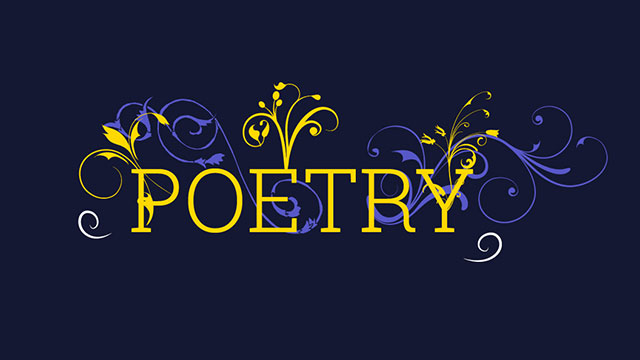Table of Contents
WICKED POEMS
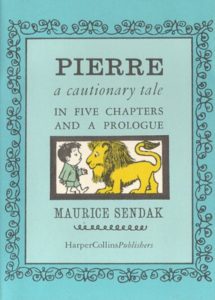
|
Maurice Sendak’s Pierre: A Cautionary Tale in Five Chapters and a Prologue (HarperCollins, 1991) is the rhyming tale of the obnoxious Pierre, who simply doesn’t care – until he’s gobbled up (not permanently) by a hungry lion and learns a useful lesson. For ages 4-8. |
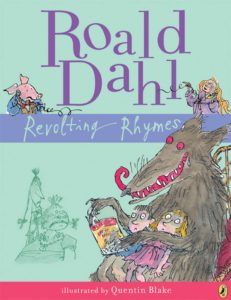
|
Roald Dahl’s Revolting Rhymes (Puffin, 2009) are wickedly clever and hilariously funny poetic spins on traditional fairy tales, with – the perfect accompaniment – illustrations by Quentin Blake. Dahl’s “Cinderella,” for example, begins: “I guess you think you know this story./You don’t. The real one’s much more gory./The phony one, the one you know/Was cooked up years and years ago/And made to sound all soft and sappy/Just to keep the children happy.” Mayhem, murder, and mockery for ages 6-9. Also by Dahl, see Dirty Beasts (Puffin, 2002). |
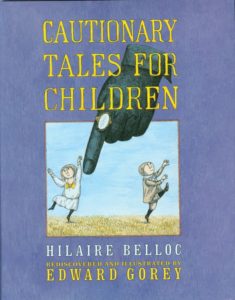
|
Hilaire Belloc’s Cautionary Tales for Children (Houghton Mifflin Harcourt, 2002) – this edition with illustrations by Edward Gorey – are tongue-in-cheek rhymes about children who misbehave and come to disproportionately dreadful ends, such as “Jim, Who ran away from his Nurse and was eaten by a Lion” and “Rebecca, Who slammed Doors for Fun and Perished Miserably.” A sure bet for fans of Roald Dahl. For all ages. |
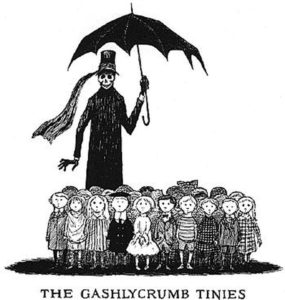
|
Edward Gorey’s The Gashlycrumb Tinies (Houghton Mifflin Harcourt, 1997) is a rhyming alphabet book from the dark side, documenting the demise of a raft of Victorian children, beginning with Amy (who fell down the stairs) and Basil (assaulted by bears.) |
| See the complete illustrated Gashlycrumb Tinies online. |
POETRY BY HEART
Jean Kerr’s Penny Candy (Fawcett Crest Books, 1971) – an hilarious memoir of family life with five sons – is now out of print, but well worth tracking down, if for nothing other than Kerr’s essay “The Poet and the Peasants.” This is an account of Kerr family “Culture Hour,” in which the boys were first made to memorize and recite – and then came to love – poetry.
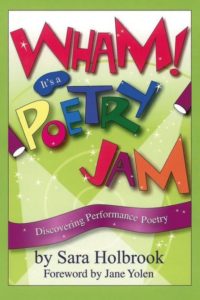
|
Sara Holbrook’s Wham! It’s a Poetry Jam (Boyds Mills Press, 2002) is a nicely designed guide to performance poetry, with lots of exercises, suggestions, and 30 practice poems. Fun for ages 7-12. |
| At Poetry Out Loud, website of the National Recitation Contest, kids can find poems, watch examples of great recitations, and get helpful performance hints. Also at the site is a large assortment of lesson plans on aspects of poem memorization and recitation. Targeted at high-school-level students. | |
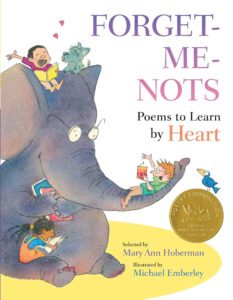
|
Mary Ann Hoberman’s Forget Me Nots: Poems to Learn by Heart (Little, Brown Books for Young Readers, 2012) is a collection of over 120 poems particularly suited to learning by heart – by 57 different poets, among them Robert Louis Stevenson, Carl Sandburg, Edward Lear, Robert Frost, Langston Hughes, and Christina Rossetti. For ages 7-10. |
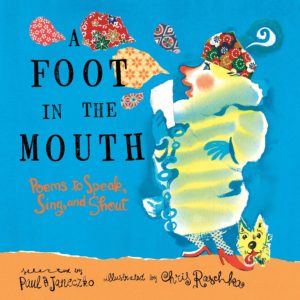
|
Performance poems? Paul Janeczko’s 64-page A Foot in the Mouth: Poems to Speak, Sing, and Shout (Candlewick, 2009) is an illustrated collection of great read-aloud poems, including poems for two, three, and many voices, list poems, bilingual poems, and tongue-twisters. Among these are Lewis Carroll’s “Jabberwocky,” the witches’ chant from Macbeth, and Walt Whitman’s “I Hear America Singing.” For ages 8 and up. |
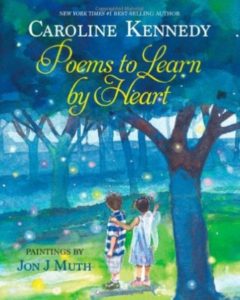
|
Caroline Kennedy’s Poems to Learn by Heart (Disney-Hyperion, 2013), illustrated with paintings by Jon Muth, is a diverse collection from a wide range of poets. For ages 9 and up. |
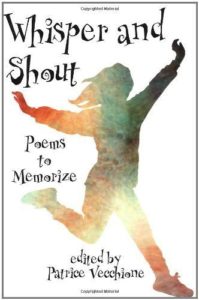
|
Compiled by Patrice Vecchione, Whisper and Shout (Cricket Books/Marcato, 2002) is a collection of over 50 poems for kids to memorize, among them Frost’s “The Road Not Taken,” Lewis Carroll’s “Beautiful Soup,” Gelett Burgess’s “The Purple Cow,” and Carl Sandburg’s “Fog.” For ages 9 and up. |
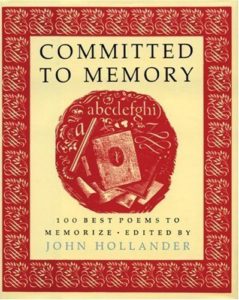
|
Edited by John Hollander, Committed to Memory (Turtle Point Press, 2000) is an elegant collection of the “100 Best Poems to Memorize.” It’s a challenging collection, divided among “Sonnets,” “Songs,” “Counsels,” “Tales,” and “Meditations.” Among the to-be-memorized are Lewis Carroll’s “Jabberwocky,” Coleridge’s “Kubla Khan,” Matthew Arnold’s “Dover Beach,” and Ernest Lawrence Thayer’s “Casey at the Bat,” which takes up three full pages. For teenagers and adults. |
